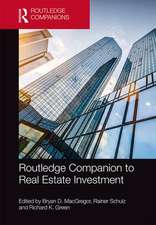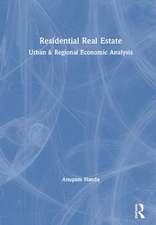Acid Rain in Europe: Counting the cost
Editat de Helen Apsimon, David Pearce, Ece Ozdemirogluen Limba Engleză Paperback – oct 2009
Preț: 267.87 lei
Nou
Puncte Express: 402
Preț estimativ în valută:
51.26€ • 53.90$ • 42.35£
51.26€ • 53.90$ • 42.35£
Carte tipărită la comandă
Livrare economică 16-30 aprilie
Preluare comenzi: 021 569.72.76
Specificații
ISBN-13: 9781853834431
ISBN-10: 1853834432
Pagini: 210
Dimensiuni: 156 x 234 x 11 mm
Greutate: 0.53 kg
Ediția:1
Editura: Taylor & Francis
Colecția Routledge
Locul publicării:Oxford, United Kingdom
ISBN-10: 1853834432
Pagini: 210
Dimensiuni: 156 x 234 x 11 mm
Greutate: 0.53 kg
Ediția:1
Editura: Taylor & Francis
Colecția Routledge
Locul publicării:Oxford, United Kingdom
Cuprins
1. Background to the Acid Rain Problem 2. The Scientific Assessment of Acidification 3. Dose-Response Relationships for Acidifying Species 4. The Economic Approach to Acidification Control 5. Forests The Nature of Acid Damage Dose-Response Functions 6. Freshwaters Acidification of Lakes and Rivers 7. Ecosystem Damage and the Effects on Biodiversity 8. Crops Dose-Response Functions Receptor 9. Buildings and Materials Nature of Impacts 10. Health Nature of Impact 11. Visibility Physical Impacts 12. Global Warming and Acid Rain 13. Damage from NO2 Emissions: Counting the Costs in Europe 14. Summary and Conclusions
Notă biografică
Helen ApSimon is leader of the Air Pollution Group, Imperial College Centre for Environmental Technology, London. David Pearce is associate director of the Centre for Social and Economic Research on the Global Environment (CSERGE), University College London, a member of the United Nations High Level Advisory Board on Sustainable Development and editor of the seminal Blueprint series (Earthscan). Ece Ozdemiroglu is a director of Economics For The Environmental Consultancy Ltd (EFTEC), London. Originally published in 1997
Recenzii
'I am delighted to welcome the publication of this important book. At last there is an authoritative volume which really addresses the acid rain issue from an interdisciplinary perspective, integrating its scientific and economic dimensions, by quantifying the benefits of abatement strategies.' -Professor Nigel Bell, Imperial College of Science, Technology and Medicine.
'This book describes a project that has been instrumental for the economic evaluation of air pollution damage in Europe carried out in the framework of the UN/ ECE Convention on Long-Range Transboundary Air Pollution. It presents the state of the art, but is written in a way that makes the material accessible to non-experts. The book will no doubt influence the policy debate for air pollution abatement strategies in Europe, and provide important impetus for the preparation of new UN/ ECE protocols and further steps to reduce acidification and ground-level ozone in Europe.'- Henning Wuester, United Nations Economic Commission for Europe.
'This book describes a project that has been instrumental for the economic evaluation of air pollution damage in Europe carried out in the framework of the UN/ ECE Convention on Long-Range Transboundary Air Pollution. It presents the state of the art, but is written in a way that makes the material accessible to non-experts. The book will no doubt influence the policy debate for air pollution abatement strategies in Europe, and provide important impetus for the preparation of new UN/ ECE protocols and further steps to reduce acidification and ground-level ozone in Europe.'- Henning Wuester, United Nations Economic Commission for Europe.
Descriere
This book describes the first major implementation of an integrated scientific and economic assessment of the consequences of acid rain. It provides an extensive data review and examines how this unique approach to assessment modelling can be can be used to calculate an acidification cost per unit of pollutant in monetary terms.





















